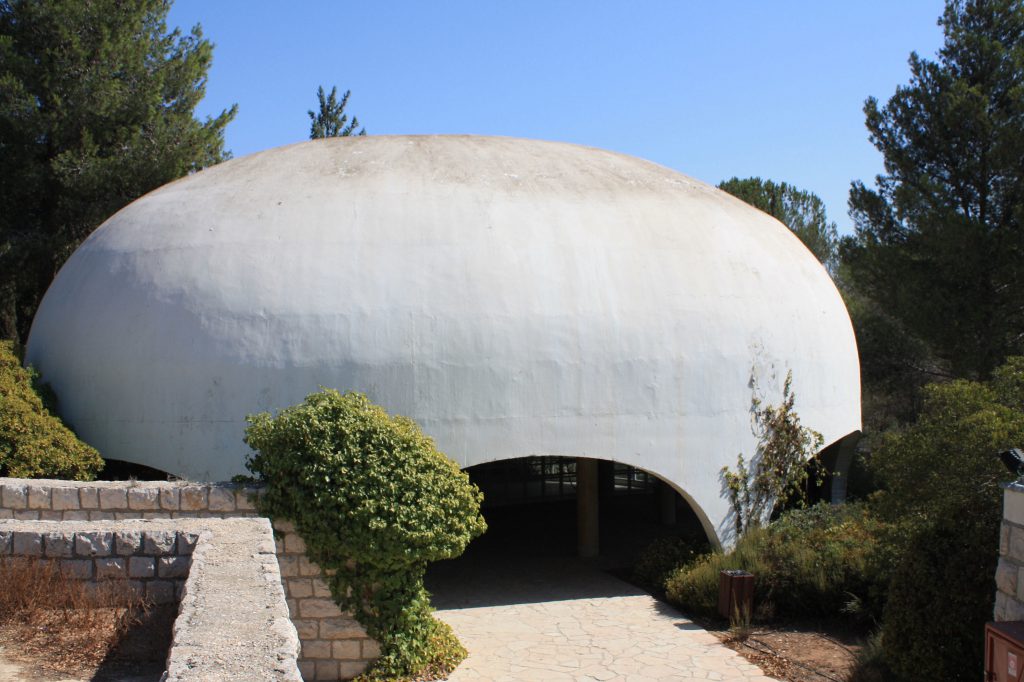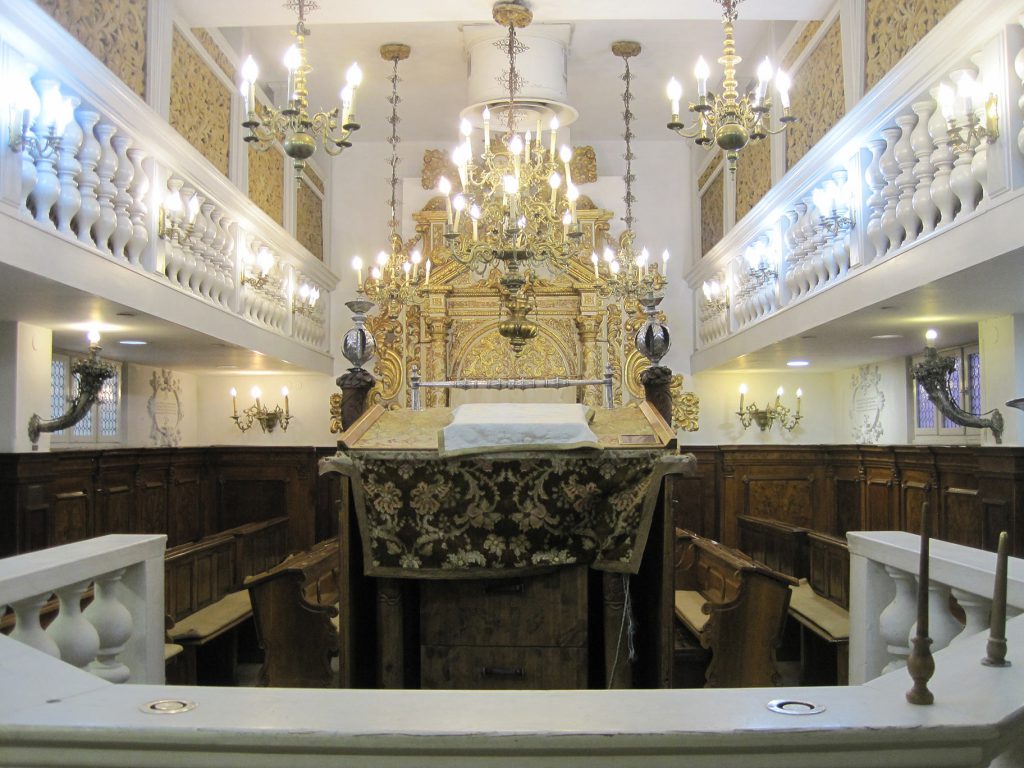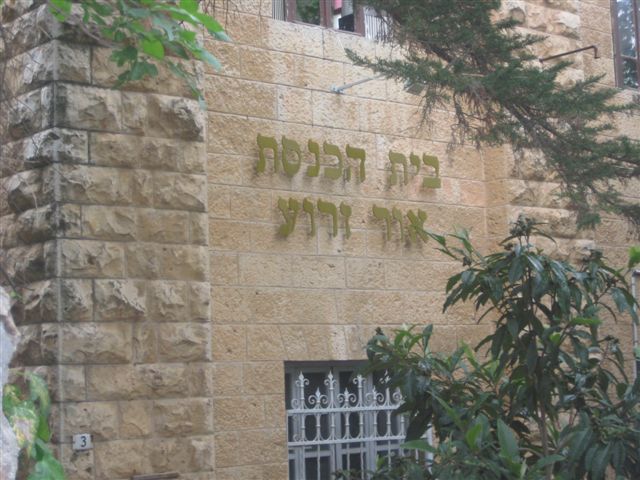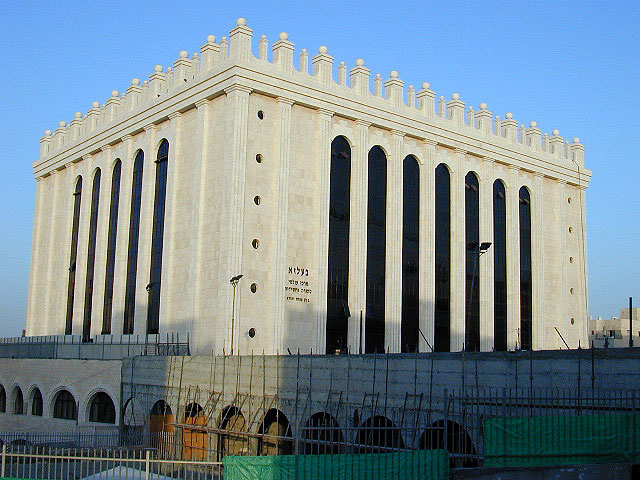A synagogue is a Jewish or rarely Samaritan house of worship. Synagogues have a place for prayer (the main sanctuary) and may also have rooms for study, a social hall, and offices. Some have a separate room for Torah study, called the beth midrash, lit. “house of study”.
Synagogues are consecrated spaces used for the purpose of prayer, reading of the Tanakh (the entire Hebrew Bible, including the Torah), study and assembly; however, a synagogue is not necessary for Jewish worship. Halakha holds that communal Jewish worship can be carried out wherever ten Jews (a minyan) assemble. Worship can also be carried out alone or with fewer than ten people assembled. However, halakha considers certain prayers as communal prayers and therefore they may be recited only by a minyan. In terms of its specific ritual and liturgical functions, the synagogue does not replace the long-since destroyed Temple in Jerusalem.

The Rabbi Dr. I. Goldstein Synagogue is a synagogue on the Edmond J. Safra Givat Ram campus of the Hebrew University in Israel named in honor of Rabbi Israel Goldstein, an American-born Israeli rabbi, author, and Zionist leader. Designed by two Israeli architects–the German-born Heinrich Heinz Rau and the Brazilian-born David Resnick–it has been listed as one of the “ten most beautiful synagogues in Israel,”and called “without a doubt, a landmark in local architecture.”
In 1964, the synagogue design was awarded the Rechter Prize by the Israeli Architects Association.
In early 18th century Rococo synagogue last used in Italy in World War I, it was reconstructed in Israel in 1952 and has since formed the heart of Jerusalem’s Italian-Jewish community, according to Gilad Levian, director of the U. Nahon Museum of Italian Jewish Art in which this architectural gem is housed.
The synagogue was originally built in Conegliano Veneto, a village located between Padua and Venice, where Jews lived from the 16th century. They prayed in the synagogue in front of a beautiful Holy Ark with fine golden carved wooden decorations.


The Hurva Synagogue, also known as Hurvat Rabbi Yehudah he-Hasid, is a historic synagogue located in the Jewish Quarter of the Old City of Jerusalem.
It was founded in the early 18th century by followers of Judah HeHasid on the ruins of a 15th century synagogue, but was destroyed a few years later in 1721 by Ottoman authorities, for failure of its proprietors to pay back a debt to local Muslims. The plot became known as “The Ruin”, or Hurva, where it lay desolate for 116 years until it was resettled in 1837 by members of the Ashkenazi Jewish community, known as the Perushim. In 1864, the Perushim rebuilt the synagogue, and although officially named the Beis Yaakov Synagogue, it retained its name as the Hurva. It became Jerusalem’s main Ashkenazi synagogue, until it too was destroyed by the Arab Legion during the fighting in the 1948 Arab–Israeli War.
After Israel captured East Jerusalem from Jordan in 1967, a number of plans were submitted for the design of a new building. After years of deliberation and indecision, a commemorative arch was erected instead at the site in 1977, itself becoming a prominent landmark of the Jewish Quarter. The plan to rebuild the synagogue in its 19th-century style received approval by the Israeli Government in 2000, and the newly rebuilt synagogue was dedicated on March 15, 2010.
The Or Zaruaa Synagogue, Nachlaot, Jerusalem- was founded in 1926 (5687 Jewish Calendar) by Rabbi Amram Aburbeh for the Ma’araviim Jewish congregation in Jerusalem. It is located on 3 Shmuel Refaeli Street in the Nachalat Ahim neighbourhood in Jerusalem.
The synagogue was named Or Zaruaa after the Beth Midrash (study hall) that was held by Rabbi Shlomo Aburbeh, Rabbi Amram Aburbeh’s father in his residence located in Avraham Azriel’s court in the Old City of Jerusalem .


The Belz Great Synagogue is one of the largest synagogues in Israel. It was built by the Belz Hasidic community with financial help from its supporters and admirers around the world.
